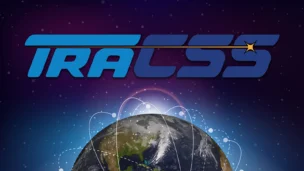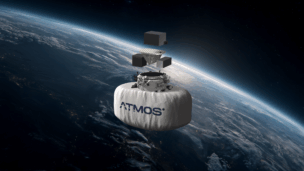There are three certainties in life: death, taxes, and fights over spectrum rights.
Certainty No. 3 continued to deliver earlier this week, with a SpaceX regulatory filing to launch a new mobile service. Specifically, SpaceX petitioned the Federal Communications Commission (FCC) for approval to provide mobile satellite service (MSS) in the 2 GHz band.
- MSS systems offer two-way voice and data services to users on the go.
- Fixed satellite services, by contrast, provide communications between
couch potatoesspecific points. - The 2 GHz band is appealing for mobile applications, SpaceX says, and is currently being underutilized.
But where’s the beef?
There is no love lost between SpaceX and Dish, and they’ve been trading sharply worded barbs all summer. SpaceX, as Payload readers well know, is growing its Starlink constellation and rolling out new product lines. Like, literally rolling out…SpaceX recently won FCC authorization to provide space internet to planes, boats, and other moving vehicles, like RVs.
Enter Dish
The entertainment provider and satellite operator has historically tapped its licensed frequency ranges to transmit TV to customers. But Dish also has plans to roll out a 5G network, and to do so, it wants to use 12 GHz for terrestrial purposes.
- The catch? 12 GHz is mostly used by satellite operators, including SpaceX and Dish.
- SpaceX, OneWeb, and DirecTV have warned that opening the band to terrestrial 5G could create radiofrequency interference and disrupt space-based services.
At the core of the saga is whether LEO internet services can coexist with terrestrial 5G networks in the 12 GHz band. As the companies continue to do 12 GHz battle by FCC filing, let’s not forget the 2 GHz news.
In this week’s filing…
SpaceX says Dish is wasting a perfectly good opportunity. SpaceX’s David Goldman writes: “While Dish Network is currently licensed to operate in the band, there is scant evidence that Dish is actually providing MSS service to anyone, anywhere.” And the spiciness continues…“Dish has squatted on its spectrum rights for a decade with little to show for it.”
An alternative use case?
Goldman calls out SpaceX’s acquisition of smallsat developer Swarm Technologies. Swarm’s satellite fleet provides connectivity to Internet of Things (IoT) devices, such as factory meters, precision agriculture sensors, and the like.
- This type of narrowband communications is useful for highly efficient, limited-capacity transmission of data. It can be used for tracking and two-way communications for widely distributed devices out of cellular coverage.
- SpaceX tells the FCC it would equip modular 2 GHz transceivers on new Starlink satellites, but would not need to launch any additional birds, nor make any modifications to Starlink orbital characteristics.
What next?
If SpaceX gets its way, the latest spectrum play could lay the groundwork for a Starlink service for on-the-go users, mobile devices, and/or IoT sensors. But if recent history is any guide, Dish will stand its ground and won’t hand over spectrum without a fight.




